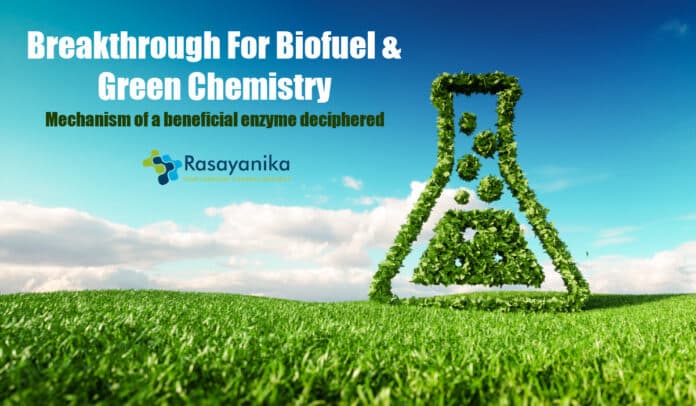Mechanism Of Photoenzyme For Biofuels & Green Chemistry Deciphered
The function of the enzyme FAP, beneficial for green chemistry and making biofuels, has been deciphered. This finding was organized by an international group of researchers, comprising many French scientists from the universities of synchrotron SOLEIL, European Synchrotron (ESRF), Aix Marseille, Paris-Saclay, & Grenoble Alpes, and École Polytechnique, Inserm & CNRS. The article is published in Science journal on April 09, 2021.
The scientists decrypted the operating dynamics of Fatty Acid Photodecarboxylase (FAP), which is inherently found in microalgae like Chlorella. The biocatalyst had been found in 2017 as an enzyme capable of using light energy to make hydrocarbons from fatty acids generated by these microscopic algae. To accomplish this new finding, research groups employed an entirely theoretical and experimental toolkit.
Discerning how FAP functions are crucial as this photoenzyme unlocks new ways of sustainable biofuel production from fatty acids which are naturally generated by living organisms. Additionally, FAP is very promising for generating high added-value materials for pharmaceutical, cosmetics, and fine chemistry.
Furthermore, as a result of their light-induced reaction, photoenzymes provide access to the ultrarapid process occurring during catalytic reactions. FAR hence provides a distinct chance to thoroughly understand a chemical reaction occurring within living organisms.
More
particularly, in this study, scientists demonstrate that when FAP is irradiated and a photon is absorbed, an electron is stripped from the fatty acid generated by the algae in 300 picoseconds. This fatty acid is later separated into carbon dioxide(CO2) and hydrocarbon precursors. A large amount of CO2 produced is then converted into bicarbonate (HCO3-) inside the enzyme in 100 nanoseconds. This activity utilizes light, however, doesn’t interfere with photosynthesis: the flavin molecule inside the enzyme FAP, which takes in the photon, is in a bent shape. This shape in turn changes the entity’s absorption spectrum towards red, such that it utilizes photons that are not employed for the photosynthetic activity of microalgae.It is the mixed analysis of the findings of different theoretical and experimental techniques by the global consortium that yields the atomic-scale, comprehensive picture of FAP at the work. This multidisciplinary research incorporated bioengineering job, optical & vibrational spectroscopy, fixed & kinetic crystallography carried out X-ray free-electron laser or synchrotrons, and quantum chemistry estimations.
The research comprised of powerful cooperation of ESRF(European Synchrotron) & SOLEIL synchrotron, two major European instruments based in Grenoble, France, from ILL (Laue Langevin Institute), and collaboration of French scientists from the Institute for Integrative Biology of the Cell (CEA/CNRS/Paris-Saclay University), the Advanced Spectroscopy Laboratory for Interactions, Reactivity and the Environment (CNRS/University of Lille), the Laboratory for Optics and Biosciences (CNRS/École Polytechnique-Institut Polytechnique de Paris/Inserm), the Institute of Structural Biology (CEA/CNRS/Grenoble Alpes University), and Biosciences and Biotechnologies Institute of Aix-Marseille (CEA/CNRS/Aix-Marseille University). It obtained the grant from the French National Research Agency. Additionally, the research comprised scientists from the SLAC National Accelerator Laboratory (USA), Moscow State University (Russia), and Max Planck Institute in Heidelberg (Germany).
Photoenzyme For Biofuels & Green Chemistry


















































soham deshmukh